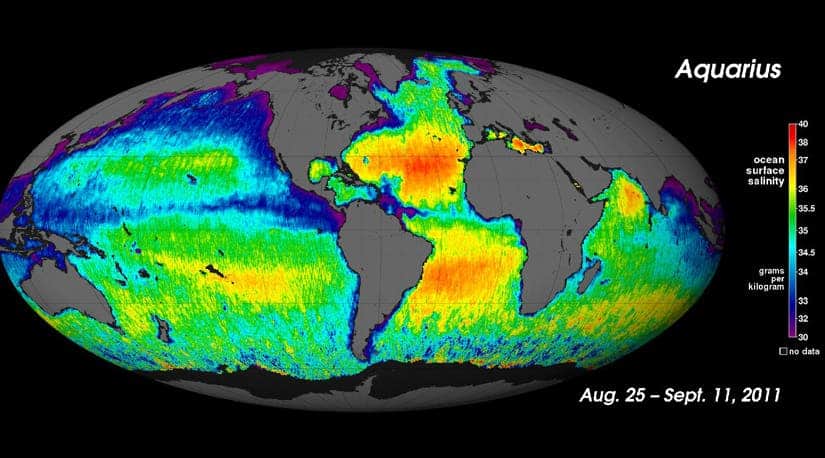Earlier this year, NASA launched the Argentine SAC-D satellite that has a number of instruments whose sole goal is that of providing scientists with important data about the environment. Aquarius is the main instrument on-board the satellite, whose mission is to measure global sea surface salinity to better predict future climate conditions. Today, NASA released the first global map of the salinity of the Earth’s seas produced by the satellite.

By studying the surface salinity of the world’s oceans, scientists can have a better understanding of key climatic processes that occur. Variations in the oceans’ salinity drive currents for example, and consequently influence the climate worldwide.
“Aquarius’ salinity data are showing much higher quality than we expected to see this early in the mission,” said Aquarius principal investigator Gary Lagerloef of Earth & Space Research in Seattle. “Aquarius soon will allow scientists to explore the connections between global rainfall, ocean currents and climate variations.”
In the past, salinity would be measured by instruments lowered from ships, however accuracy wasn’t quite the strongest point of this technique. With Aquarius, salinity can be measured in more discrete means, as the satellite is capable of retrieving salinity with a resolution of 0.2 parts per thousand. That is a concentration change equivalent to about one millilitre of salt in six litres of water.
“Aquarius/SAC-D already is advancing our understanding of ocean surface salinity and Earth’s water cycle,” said Michael Freilich, director of NASA’s Earth Science Division at agency headquarters in Washington. “Aquarius is making continuous, consistent, global measurements of ocean salinity, including measurements from places we have never sampled before.”
If you’re wondering how a space satellite can measure space satellite is able to determine water salinity more accurately than an instrument directly dipped into the ocean, this is made possible using three high-precision radio receivers that record the natural microwave emissions coming up off the water’s surface. These emissions vary with the electrical conductivity of the water, which is a property directly related to how much dissolved salt it is carrying.


